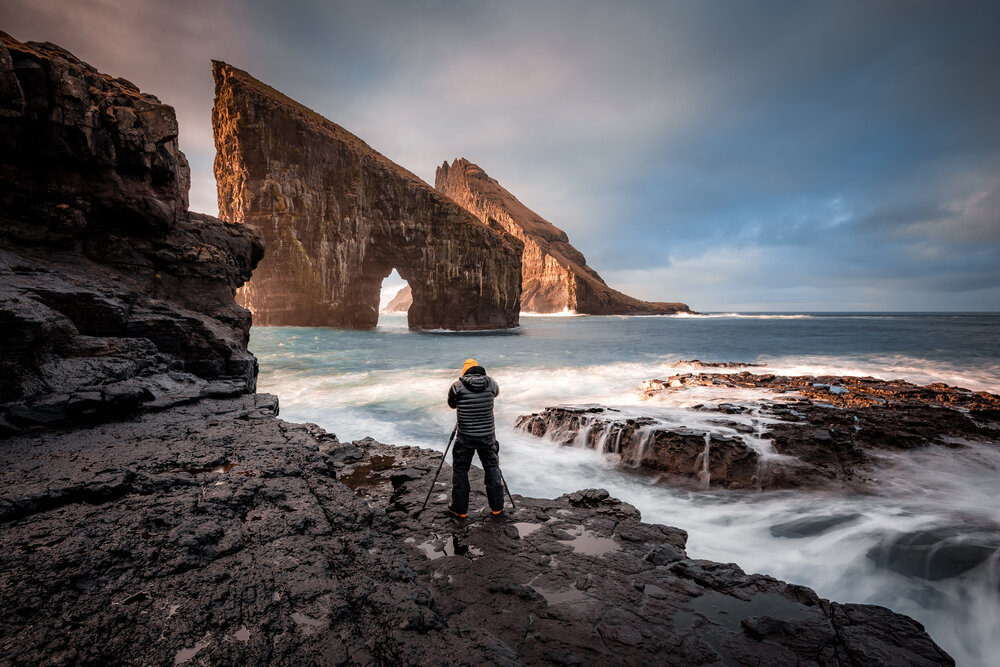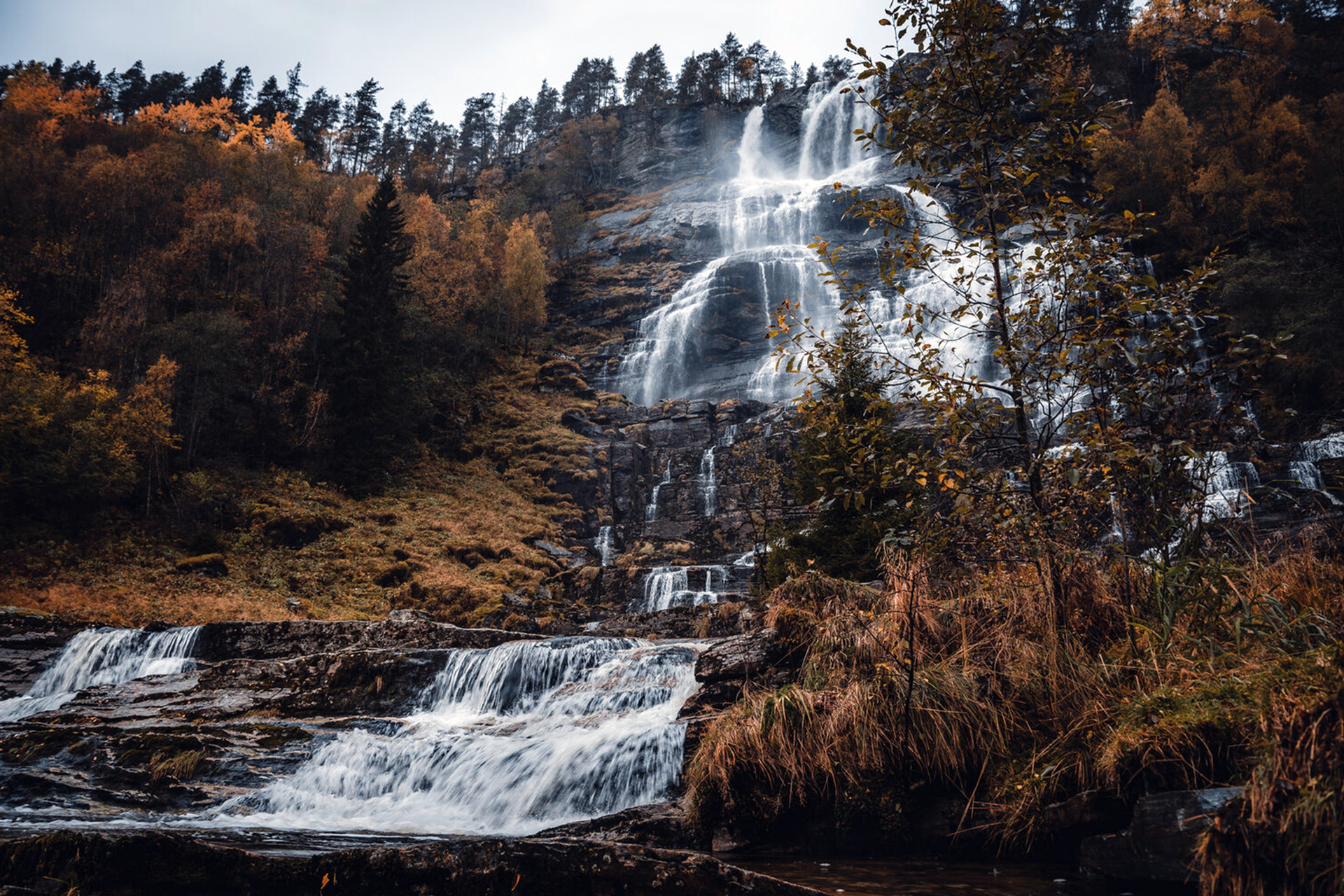There are no products in your shopping cart yet.
Composition
Good image composition in photography can help make your photos visually appealing and captivating.
Before you go out to take photos, you must prepare yourself well, plan your shoot, it is important to explore your location, this can be done on site, but also with Google maps. The weather, tide and time of day are also important factors to take into account.
Take your time and wait until conditions are right before printing. Play with different settings and filters to see what kind of effects you can achieve. Sometimes unexpected combinations can produce wonderful results. Make sure your equipment is in order, tripod, remote control, memory cards, batteries, lenses and of course your Kase filters.
Before you go out to take photos, you must prepare yourself well, plan your shoot, it is important to explore your location, this can be done on site, but also with Google maps. The weather, tide and time of day are also important factors to take into account.
Take your time and wait until conditions are right before printing. Play with different settings and filters to see what kind of effects you can achieve. Sometimes unexpected combinations can produce wonderful results. Make sure your equipment is in order, tripod, remote control, memory cards, batteries, lenses and of course your Kase filters.
After this preparation it comes down to the correct composition and your point of view, there are different principles and rules for this. These rules were previously used by the masters of painting and are still used today as a guideline. It can be a great way to take your photography to the next level and let your images speak.
Some of these rules are explained below with examples.
The Rule of Thirds

The rule of thirds is a simple, yet powerful compositional rule in photography that helps you create compelling and balanced images. The idea behind this rule is that you divide the image into an imaginary grid of nine equal parts, by drawing two horizontal lines and two vertical lines. When you take a photo, the horizon often falls on one of two horizontal lines and you place the subject or key focal points at the intersections of these lines or along the lines themselves.
This helps make your photo more visually interesting and dynamic, rather than simply placing the subject in the center of the frame. By using the rule of thirds you can create a sense of balance and harmony in your photos. It helps you guide the viewer's eye through the image and ensures there is enough room for other elements in the composition.
However, the rule of thirds is not a strict law that must always be followed. Rather, it is a guideline that you can use as a basis, but also deviate from when necessary to achieve a specific effect.
This helps make your photo more visually interesting and dynamic, rather than simply placing the subject in the center of the frame. By using the rule of thirds you can create a sense of balance and harmony in your photos. It helps you guide the viewer's eye through the image and ensures there is enough room for other elements in the composition.
However, the rule of thirds is not a strict law that must always be followed. Rather, it is a guideline that you can use as a basis, but also deviate from when necessary to achieve a specific effect.
The rule of the golden ratio

The golden ratio refers to the application of the golden ratio in art, architecture and design. It involves placing elements within a composition according to the proportions of the golden ratio to achieve an aesthetically pleasing result.
The rule of the golden ratio can be applied in different ways, some common applications are:
Division of a line: A line is divided into two parts, where the ratio of the entire segment to the largest part is equal to the ratio of the largest part to the smallest part (approximately 1.618). This can help determine the position of elements on the line.
Positioning of elements: When placing objects or elements in a composition, such as a painting or photograph, the rule of the golden ratio can be used to determine the proportions between the elements. Important elements are often placed at points that correspond to the proportions of the golden ratio, such as the intersections of imaginary lines that divide the composition into sections.
Scale proportions: The proportions of the golden ratio can also be applied to the scale proportions of objects. When designing buildings, furniture or other objects, the dimensions and proportions can be determined using the golden ratio to achieve a harmonious effect.
This ratio is considered pleasant and balanced. It provides a natural viewing experience, because the golden ratio is also observed in nature. It occurs in the proportions of shells, flowers, leaves and other biological structures. It is important to note that the golden ratio rule is a guideline and not a strict rule.
Leading lines

The rule of leading lines is a compositional technique in photography that uses lines in an image to guide the viewer's eye to a specific point or subject. The idea behind this rule is to use lines that lead from the edges or foreground of the photo to the main subject or other important element in the composition.
Leading lines can take different shapes, such as straight lines, curved lines, diagonal lines, roads, paths, rivers, fences, buildings, and so on. They can be found in both nature and urban environments. By strategically positioning leading lines in your photo, you create a sense of depth, dimension and movement. They also help create a visual path that guides the viewer's eye through the photo, creating a sense of exploration and discovery. It is important to choose the right lines that match the desired effect of your photo.
For example, diagonal lines can add dynamism and tension, while horizontal lines can create a sense of calm and stability. Experiment with different perspectives, points of view, and compositions to find the most effective leading lines that enhance your story or message.
This rule is there to help you create strong compositions, but sometimes it can also be interesting to consciously deviate from this rule to create a unique effect.
Leading lines can take different shapes, such as straight lines, curved lines, diagonal lines, roads, paths, rivers, fences, buildings, and so on. They can be found in both nature and urban environments. By strategically positioning leading lines in your photo, you create a sense of depth, dimension and movement. They also help create a visual path that guides the viewer's eye through the photo, creating a sense of exploration and discovery. It is important to choose the right lines that match the desired effect of your photo.
For example, diagonal lines can add dynamism and tension, while horizontal lines can create a sense of calm and stability. Experiment with different perspectives, points of view, and compositions to find the most effective leading lines that enhance your story or message.
This rule is there to help you create strong compositions, but sometimes it can also be interesting to consciously deviate from this rule to create a unique effect.
Symmetry and balance

Two important elements in photography are symmetry and balance, which can contribute to a strong composition. Here are some ways you can apply symmetry and balance to your photos.
Symmetry in the composition: Look for scenes in which natural or man-made elements form a symmetrical pattern. These can be mirror images, such as a building reflected in a water surface, or repeating patterns in nature, such as rows of trees or flowers. Place the subject in the center of the frame to emphasize symmetry, so you can create a sense of harmony and balance.
Asymmetric balance: Although symmetry is often associated with balance, you can also create balance through asymmetry.
This involves placing the main subject off-center, but in a different position in the frame, while providing other elements or negative space on the other side to maintain balance.
Contrasting elements: Balance can also be achieved by combining elements with opposite qualities, such as light and dark, large and small, or colorful and neutral.
Make sure these elements are strategically placed to create visual balance in your composition.
Rule of Thirds: Although not directly related to symmetry, the Rule of Thirds can also be used to achieve balance in your photos.
Place key elements at the intersections of the imaginary grid lines, or along the lines themselves, to create a balanced composition that is visually appealing.
Remember that balance and symmetry are flexible concepts and it's important to experiment and develop your own style. Sometimes breaking symmetry or creating an asymmetrical composition can actually lead to interesting results. Be creative and use these principles as guidelines to improve your photography.
Symmetry in the composition: Look for scenes in which natural or man-made elements form a symmetrical pattern. These can be mirror images, such as a building reflected in a water surface, or repeating patterns in nature, such as rows of trees or flowers. Place the subject in the center of the frame to emphasize symmetry, so you can create a sense of harmony and balance.
Asymmetric balance: Although symmetry is often associated with balance, you can also create balance through asymmetry.
This involves placing the main subject off-center, but in a different position in the frame, while providing other elements or negative space on the other side to maintain balance.
Contrasting elements: Balance can also be achieved by combining elements with opposite qualities, such as light and dark, large and small, or colorful and neutral.
Make sure these elements are strategically placed to create visual balance in your composition.
Rule of Thirds: Although not directly related to symmetry, the Rule of Thirds can also be used to achieve balance in your photos.
Place key elements at the intersections of the imaginary grid lines, or along the lines themselves, to create a balanced composition that is visually appealing.
Remember that balance and symmetry are flexible concepts and it's important to experiment and develop your own style. Sometimes breaking symmetry or creating an asymmetrical composition can actually lead to interesting results. Be creative and use these principles as guidelines to improve your photography.
Framing

Framing is a powerful tool in photography that allows you to direct the viewer's attention and emphasize your subject. It involves consciously selecting elements in your environment to create a visual framework around your subject.
Framing can add depth and dimension to your photos and provide a sense of context and story. Here are a few ways you can use framing in your photography:
Natural frames: Notice natural elements, such as branches, leaves, arches, or windows, that frame your subject. Use them as a frame within your composition to draw attention to the subject while adding a sense of depth and layering.
Architectural frames: Use the architecture to create a frame around your subject. Think of doorways, windows, gates or arch structures. They can serve as visual frames that frame and emphasize your subject.
Human Frames: People can also act as frames in your photos. Think of photographing through a person's arms, through a crowd or through a gap in a group of people. This creates a sense of interaction and makes your subject more prominent in the composition.
Negative Space: Framing can also be achieved by using negative space. Place your subject in an empty, open area, surrounded by space. This creates a visual focus on the subject and draws the viewer's attention directly to the central point. Try different viewpoints, angles and compositions to create the most impactful frame for your subject.
Framing can add depth and dimension to your photos and provide a sense of context and story. Here are a few ways you can use framing in your photography:
Natural frames: Notice natural elements, such as branches, leaves, arches, or windows, that frame your subject. Use them as a frame within your composition to draw attention to the subject while adding a sense of depth and layering.
Architectural frames: Use the architecture to create a frame around your subject. Think of doorways, windows, gates or arch structures. They can serve as visual frames that frame and emphasize your subject.
Human Frames: People can also act as frames in your photos. Think of photographing through a person's arms, through a crowd or through a gap in a group of people. This creates a sense of interaction and makes your subject more prominent in the composition.
Negative Space: Framing can also be achieved by using negative space. Place your subject in an empty, open area, surrounded by space. This creates a visual focus on the subject and draws the viewer's attention directly to the central point. Try different viewpoints, angles and compositions to create the most impactful frame for your subject.
Diagonal lines

Diagonal lines are like dynamic streaks of energy that bring your photos to life. They add movement, tension and depth to your compositions, giving your images a powerful visual effect.
Diagonal lines are everywhere in the world around us. They can be formed by buildings, roads, stairs, hills, or even shadows that fall across the landscape in an interesting way.
By consciously using these lines in your photography, you can hold the viewer's attention and create a sense of dynamism.
Diagonal lines have the power to guide the viewer's eye through the photo. They can be used to structure the composition and strategically position the subject. By following the lines, the viewer feels taken on a visual journey through the image, as it were.
In addition, diagonal lines can also create a sense of depth. They can add perspective to a photo, making the viewer feel like they can step into the image. This can be especially effective when photographing landscapes, architecture or street scenes.
If you want to emphasize diagonal lines, you can experiment with your point of view and composition. Shoot from a lower or higher perspective to make the lines stand out more. Place your subject at a point where the diagonal lines meet to create a sense of impact.
Diagonal lines are a powerful tool in photography, use them consciously in your compositions and bring your photography to life with dynamism and visual impact.
Space

In the world of photography, there is a rule that has the power to let your images breathe and give the viewer a sense of space: the rule of space. This rule is all about consciously creating empty space around your subject, giving it the freedom to breathe and shine.
The rule of space is a composition technique that helps achieve balance and harmony in your photos. It also helps to direct the viewer's attention and enhance focus. Empty space can be used in different ways.
It can be a background that brings peace and simplicity, making your subject stand out. It can also be space at the side or top of your frame, giving your subject room to move or look into the composition.
The rule of space can be applied in all kinds of photography. Whether you're taking portraits, capturing landscapes or practicing street photography, there's always room to play with empty space and its effect on your composition. Pay attention to the view or walking direction of your subject, there must be space, otherwise you will get a negative effect and it will collide with the edge of your image.
The great thing about the rule of space is that it is not a rigid rule, give your subjects the breathing space they deserve and watch your images come to life.
The rule of space is a composition technique that helps achieve balance and harmony in your photos. It also helps to direct the viewer's attention and enhance focus. Empty space can be used in different ways.
It can be a background that brings peace and simplicity, making your subject stand out. It can also be space at the side or top of your frame, giving your subject room to move or look into the composition.
The rule of space can be applied in all kinds of photography. Whether you're taking portraits, capturing landscapes or practicing street photography, there's always room to play with empty space and its effect on your composition. Pay attention to the view or walking direction of your subject, there must be space, otherwise you will get a negative effect and it will collide with the edge of your image.
The great thing about the rule of space is that it is not a rigid rule, give your subjects the breathing space they deserve and watch your images come to life.
Pattern and repetition

Step into the world of pattern and repetition, where the magic of photography is revealed. A world in which simple shapes and structures merge into an enchanting visual spectacle.
With your camera in hand, you will learn the art of observation. You discover how patterns unfold all around you: in the architecture of the city, in the natural richness of the landscape, and even in everyday objects that are often overlooked.
Your eyes are drawn to the repetition of shapes and textures. Rows of windows that stretch across a building like a mosaic pattern.
A row of trees dancing along the horizon, like a rhythmic melody in the landscape. You feel the magic in the repetition, the power in the patterns that unfold before your lens.
With careful composition you capture the play of light and shadow in the repeating shapes. You create an image that enchants the viewer and invites them to look deeper. The repetition gives a sense of order and structure, but also of harmony and beauty.
In the world of patterns and repetition you discover that no subject is too common. A stack of books that repeats itself reveals a world of knowledge and stories. A staircase that repeats itself in perfect symmetry invites you to explore unknown heights. Even a simple row of chairs can reveal a poetry of lines and shapes. But don't be afraid to break the boundaries of repetition. Play with contrasts, with interruptions in the patterns. Add a surprising element that grabs attention and defies the rules. It is in those moments of contrast that the magic of creativity comes to life. Dive into the world of pattern and repetition and capture the enchantment in your photos.
In addition to the above rules of composition, there are a number of point of view guidelines that can make your photos more interesting.
The best angle for landscape photography can vary depending on the landscape, the desired effect and your artistic vision.
Here are some viewpoints that are often effective in landscape photography:
Here are some viewpoints that are often effective in landscape photography:

Eye level: Photograph the landscape from your eye level. This point of view gives a realistic representation of the landscape as you see it. It can create a feeling of intimacy and connection.

Bird's eye view: Go to a higher point, such as a hilltop, viewpoint or use a drone, and photograph the landscape from above.
This viewpoint provides an overview of the landscape and can emphasize patterns, lines and shapes.
This viewpoint provides an overview of the landscape and can emphasize patterns, lines and shapes.

Frog perspective: Photograph the landscape from a lower angle, for example from the ground, looking up.
This can magnify dramatic features in the landscape, such as mountains, trees or clouds, and create a sense of grandeur.
This can magnify dramatic features in the landscape, such as mountains, trees or clouds, and create a sense of grandeur.

Diagonal perspective: Try to photograph the landscape from an angle that creates diagonal lines, such as a road running diagonally through the frame. Diagonal lines can add dynamics and depth to the composition.

Foreground Elements: Add an interesting element in the foreground of your composition, such as rocks, flowers, or a pond.
This helps add depth and context to the landscape and makes the photo more interesting.
This helps add depth and context to the landscape and makes the photo more interesting.

Frame within a frame: Look for natural or man-made features, such as trees, arches, or windows, that can provide a frame for your landscape photo. This can give a sense of depth and focus.
Experiment: Don't be afraid to try different points of view and experiment with your compositions.
Explore different angles, distances and perspectives to take unique and interesting photos.
Explore different angles, distances and perspectives to take unique and interesting photos.
Remember that the best choice of point of view depends on the specific landscape and the story you want to tell.
Take the time to explore, observe and add your own creative interpretation to your landscape photography.
Take the time to explore, observe and add your own creative interpretation to your landscape photography.
Also pay attention to the focus: Consciously consider where you put the focus in your photo. Whether it's on the subject itself or elsewhere in the frame, make sure the focus directs the viewer's attention to what you think is important.
Light and shadow: Pay attention to how light and shadow affect your subject. Play with contrasts, use sidelight or backlight to create interesting effects and add depth to your photos.
Light and shadow: Pay attention to how light and shadow affect your subject. Play with contrasts, use sidelight or backlight to create interesting effects and add depth to your photos.
These guidelines are not absolute. Creativity and individuality play an important role in photography. The most important thing is to develop your own style and experiment with different approaches to viewing. Stay close to yourself and try and practice a lot.
And most importantly, enjoy all the beautiful moments, because photography is about experiencing and having fun!
If you find it difficult to apply all these image rules, take a workshop with one of our ambassadors.
Comments (0)
No comments found.
